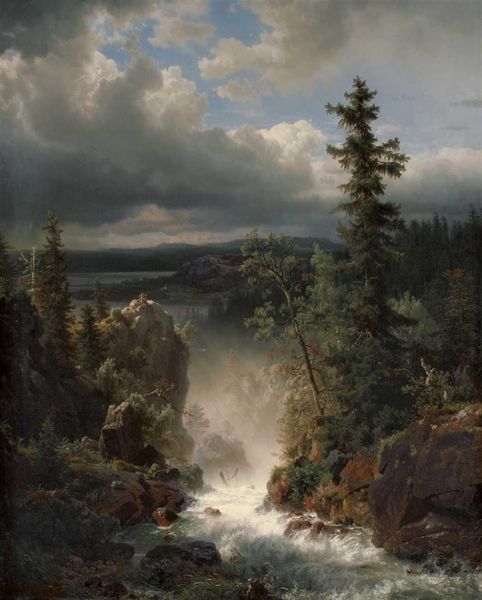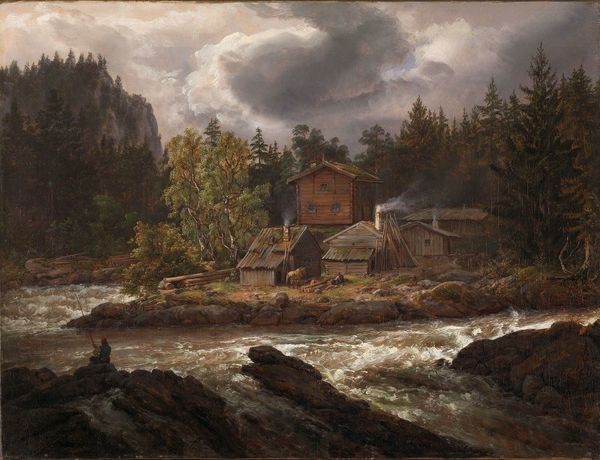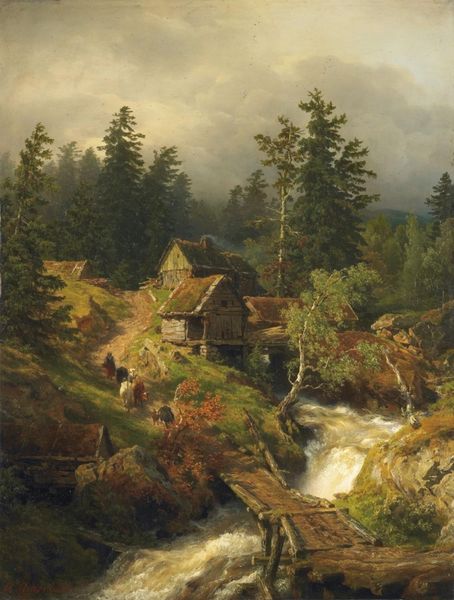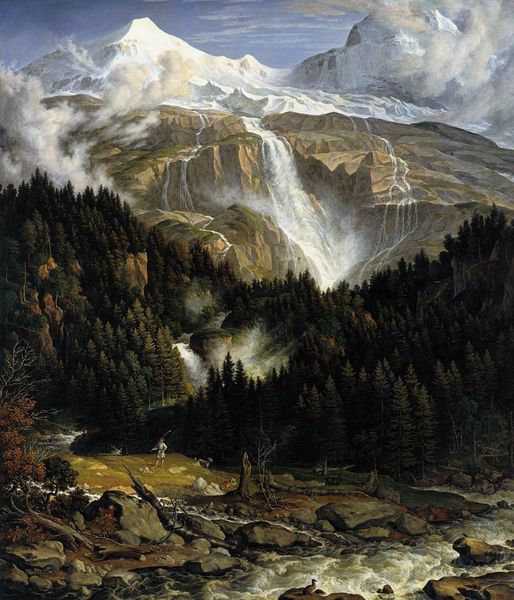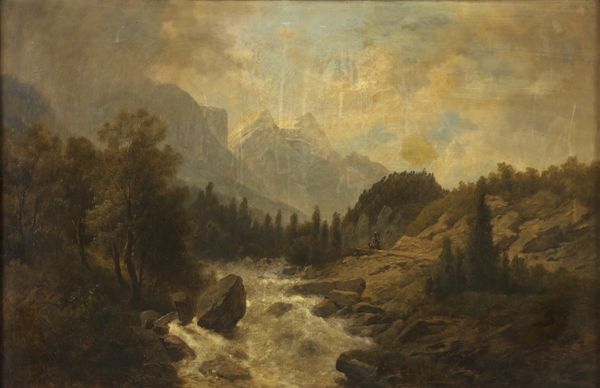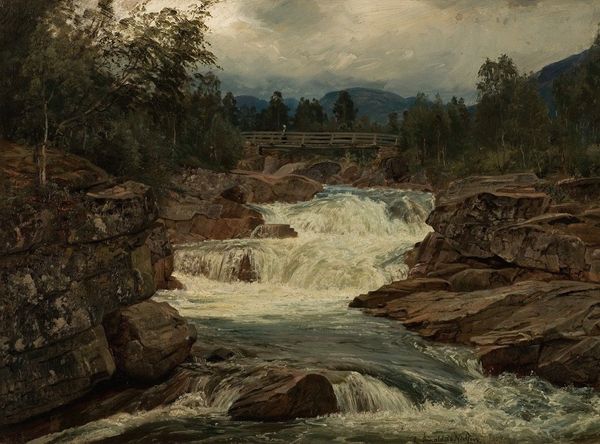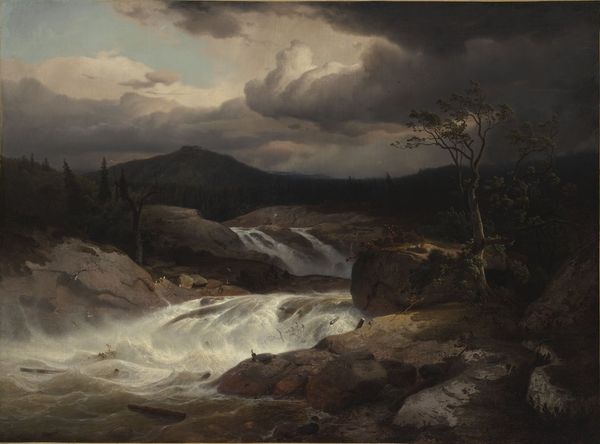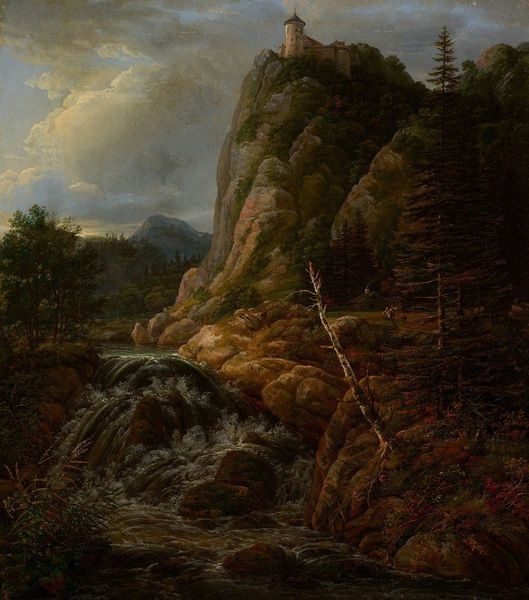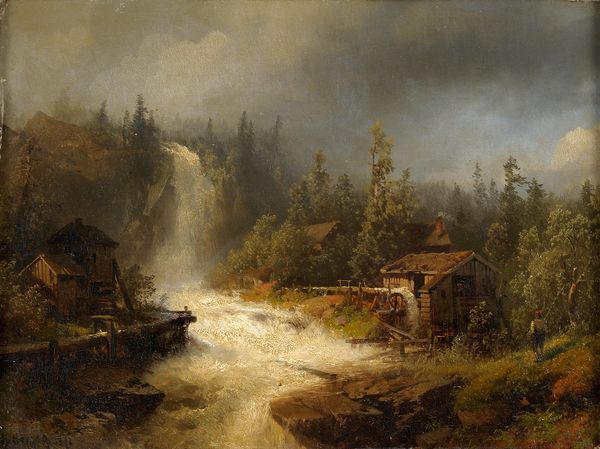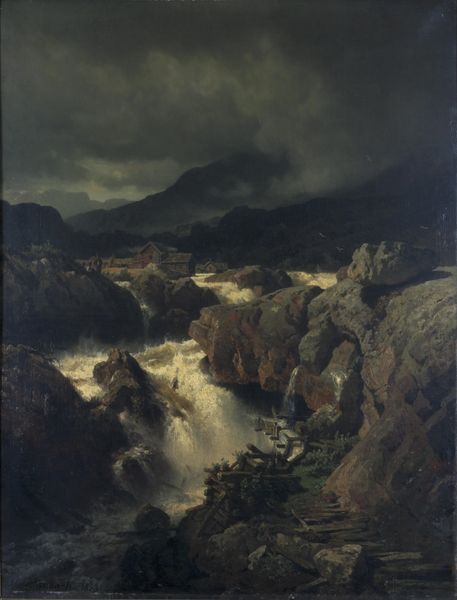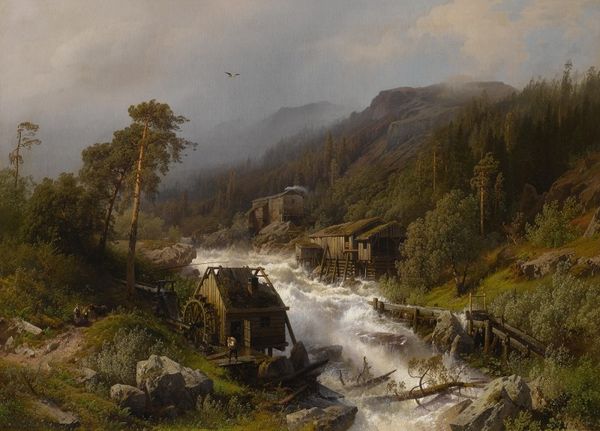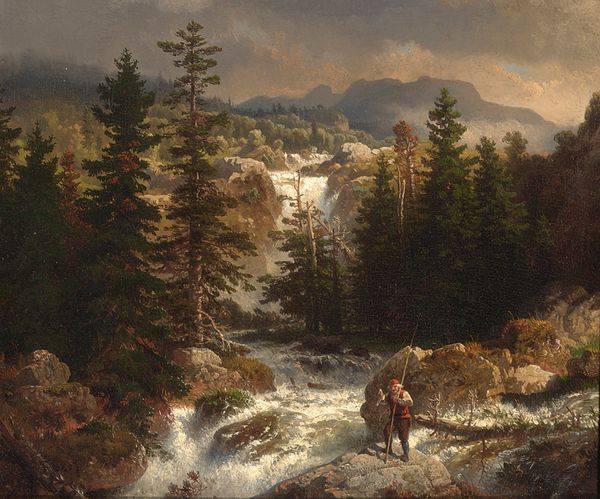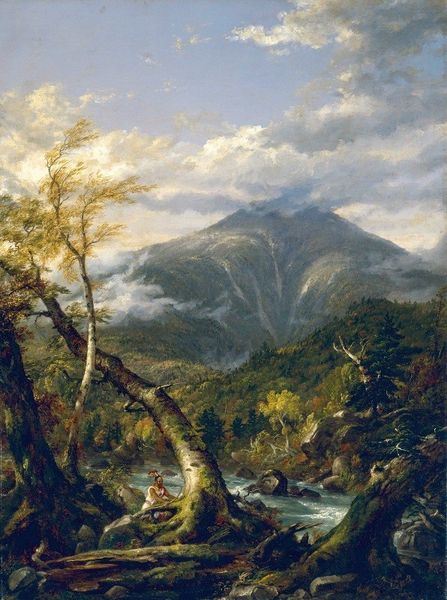
Copyright: Public Domain: Artvee
Curator: Johan Christian Dahl painted "The Upper Falls of the Labrofoss" between 1855 and 1856. It's an oil painting that vividly captures a Norwegian landscape. What strikes you first about it? Editor: The drama! It’s quite overwhelming. The falls are powerfully rendered, and the stormy sky lends a certain gravity. There's an interesting contrast between the raw, untamed nature and the presence of human structures. Curator: Right, Dahl's naturalism places importance on observation, but there’s romanticism too, specifically in his depiction of this powerful waterfall, alongside humble structures and everyday labour in a rural landscape. Note also the wooden building built right at the edge of the waterfall, it suggests the use of the water's power in a way that can also speak about production. Editor: Absolutely. And you can see how that structure and its inhabitants, even those few goats resting on the rocks, are fundamentally interwoven with the power and rhythms of nature. Is this painting reflecting a certain cultural attitude? Perhaps ideas of control? The church on the hills seems far away but it could be the moral guide that justifies taming nature's wilderness, which in turn permits production, labor and ultimately, profit. Curator: It is interesting that you see such elements because the church on the top has become distant. Think of how labor has reshaped the landscape here. Note, too, Dahl's treatment of light, especially highlighting how the buildings interact directly with water power to be put into productive processes, and consider the texture. His detailed brushwork captures the rocks and the movement of water, and the sky's shadows. Editor: The composition leads you through several layers: the rocky foreground, the dynamic waterfall, the little human structures, and ultimately, the distant church and mountains. This spatial depth invites contemplation. In this romantic quest, where has nature gone? Is it for our consumption? Where will our civilization arrive to when faced with such moral freedom? Curator: Indeed. Through examining the materials, and their presence in social context, as in this depiction, Dahl questions where consumption leads. Thank you, it makes you reflect on our current context too. Editor: Thank you, yes! A powerful and timely work, after all.
Comments
No comments
Be the first to comment and join the conversation on the ultimate creative platform.
